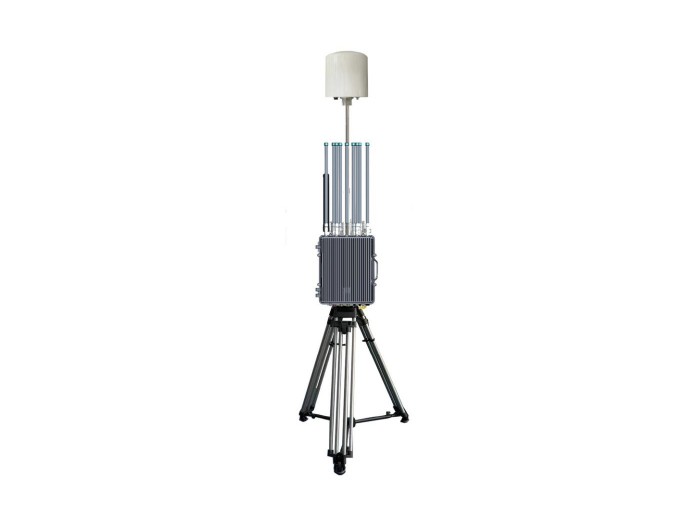DIY Drone Jamming Device Gun: A Comprehensive Guide
Introduction
The rising prevalence of drones in everyday life has brought numerous benefits, but it also presents new challenges related to privacy, security, and safety. Many individuals and organizations find themselves facing unwanted drone surveillance or interference that compromises their peace of mind. With the growing demand for effective countermeasures, an elegant solution has emerged: the DIY drone jamming device gun. This guide will explore how you can create a custom-built jamming device to thwart unwanted drone activity, all while emphasizing legality and safety. Using the proper techniques, you can safeguard your space and enjoy the benefits of drone technology without the intrusions they can bring.
Understanding Drone Jamming Technology
Before you embark on constructing your DIY drone jamming device gun, it's critical to understand how drone jamming technology works. Essentially, jamming devices disrupt the communication signals between a drone and its controller. By emitting signals on the same frequency as those utilized for control and GPS navigation, a drone jamming device forces the drone to either lose control or return to its home location. According to recent studies, the market for drone jamming technology is expected to grow significantly, with the global security sector expressing increased interest in counter-drone solutions.
Devices typically operate in the 2.4 GHz and 5.8 GHz frequency bands, which are commonly used for consumer drones. However, it’s crucial to note that using jamming devices can be illegal in many jurisdictions. Always check local laws and regulations governing the use of signal jamming equipment before proceeding.
In situations where device jamming is necessary for security purposes—such as in military settings or sensitive areas—it can be an effective form of counter-drone technology. Seeking professional advice and utilizing proper protocols is also advisable.
Benefits of Building a DIY Drone Jamming Device Gun
Creating your own drone jamming device gun offers numerous advantages. First and foremost, it grants you autonomy and the ability to customize your device to fit your specific needs and preferences. Here are some of the key benefits:
- Cost-Effective: Building a DIY drone jamming device is often cheaper than purchasing a commercial unit. With some basic electronics and parts, you can create a jamming device tailored for your purposes.
- Educational Value: The process of constructing a jamming device can deepen your understanding of electromagnetic signals, communication frequencies, and drone technology in general.
- Customizability: Depending on your requirements, you can tweak the specifications and features of your jamming device as needed.
- Empowerment: Have the knowledge and tools to protect your privacy and security from potential drone threats can enhance your confidence.
Moreover, many industries, such as agriculture and security, can utilize these devices effectively to manage drone operations in their respective fields, adding another layer of control in sensitive environments.
Step-by-Step Guide to Building Your Drone Jamming Device Gun
Ready to get started? Here’s a simplified step-by-step process to create your drone jamming device gun. Please ensure to follow safety procedures and legal guidelines throughout this project.

- Gather Materials: You will need a transmitter module (e.g., a 2.4 GHz RF module), a suitable power source, a microcontroller (such as Arduino), a chassis to house your components, and an antenna. Ensure your components are rated appropriately for signal outputs and ranges.
- Design the Circuit: Use a circuit diagram to connect your transmitter module to the microcontroller. The microcontroller will control the emission frequency and timing of the signals.
- Programming: Code the microcontroller to generate the appropriate jamming signals. This may include functions for frequency adjustments and signal modulation to avoid being easily detected.
- Assemble the Components: Securely install the circuit and transmitter module within the chassis. Make sure the antenna is correctly positioned for optimal signal emission.
- Testing: Conduct initial tests in a controlled environment, fine-tuning the device for optimal performance. Always remain mindful of legality and ethical implications during testing.
Following these steps will help you create a functional DIY drone jamming device gun capable of providing greater control over unwanted drone activity.
Recommendations and Key Takeaways
- Always consult local laws regarding drone jamming devices before building or using one to avoid legal repercussions.
- Consider incorporating additional features such as adjustable signal strength and user-friendly interfaces for an enhanced experience.
- Engage with community forums or groups focused on drones and jamming technology to share knowledge and gather insights.
- Regularly update your device's software to maintain efficiency and adapt to new security standards.
- If you’re uncertain about legality or technical aspects, consult with legal experts or professionals before proceeding.
Conclusion
Building a DIY drone jamming device gun offers an innovative solution to address the issues surrounding unwanted drone interference. By following this guide, you will not only gain the technical skills to construct the device but also empower yourself to manage your surroundings effectively. Always prioritize safety and legality in all your efforts. For more detailed information, resources, or professional consultation on drone management, visit our website now!
















